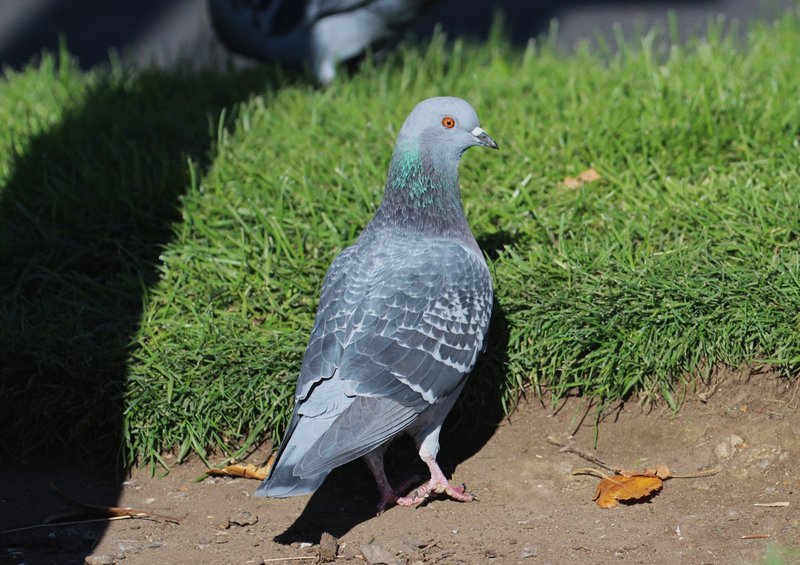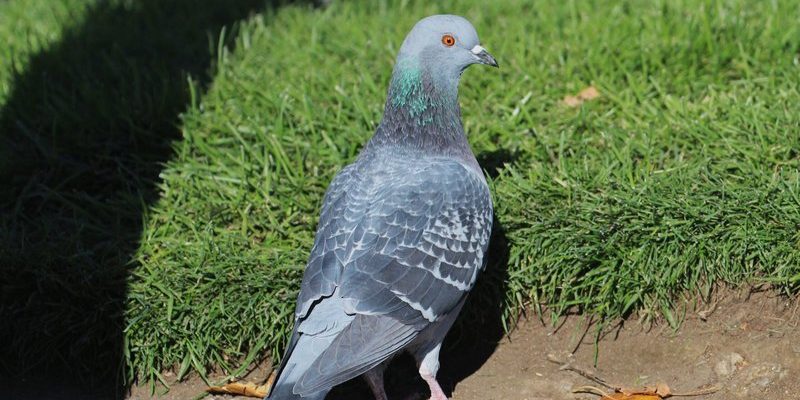
Rock pigeons, also known scientifically as *Columba livia*, are more than just common birds; they’re fascinating creatures with a rich history intertwined with humans. From ancient cities to modern metropolises, they’ve adapted beautifully to our world. So, let’s dive in and explore the unique characteristics that help you easily spot a rock pigeon when you’re outdoors.
Physical Characteristics of Rock Pigeons
One of the first things you’ll notice about rock pigeons is their size. Typically, they’re medium-sized birds, measuring around 12-14 inches in length. Their weight varies, but you can expect them to weigh about 9-13 ounces. When you see one up close, look for their short necks and rounded bodies, which give them a distinctive shape.
Their plumage is quite striking. Most commonly, they have grayish feathers sprinkled with hints of iridescent greens and purples on their necks. The color can vary significantly, though, depending on their location and genetic background. Some might have lovely brown, black, or even white feathers. The key to spotting them? Keep an eye on their tail feathers—rock pigeons have a fan-shaped tail with white tips, which stand out when they take off.
Behavior and Habitats
You might be wondering where you’ll find these birds. Rock pigeons are incredibly versatile, adapting well to both urban and rural settings. They can often be seen roosting on buildings or cliffs, which provides them a safe perch from predators. This adaptability is a huge part of what makes them successful in the wild.
These birds are social creatures and often gather in flocks. When you spot a group of pigeons, you might see them pecking at the ground for seeds or crumbs. Rock pigeons are quite high-energy, often darting about or flying in circles before landing. Their flight is rapid and graceful, making it easy to recognize them once you get the hang of it.
Vocalizations: Sounds of the Rock Pigeon
Have you ever heard the soft cooing sound of a pigeon? It’s one of the identifiers of a rock pigeon. Their call is a gentle, guttural coo that might remind you of a distant heartbeat. This cooing is often used in mating rituals or to communicate within the flock.
Interestingly, rock pigeons have a range of vocalizations. Besides their coo, they can produce sounds to warn their companions of potential danger. If you listen closely, you might hear a rapid series of coos when they’re feeling threatened, which signals the flock to take off quickly. So, keep your ears open; their sounds can give you clues about their behavior.
Distinguishing Features from Other Birds
While rock pigeons are distinctive, they can sometimes be confused with similar-looking birds, such as doves. A good way to tell them apart is by looking at the size and color. Rock pigeons are generally larger and have more color variation than your typical mourning dove, which is usually a soft gray-brown.
Another feature is their tail. Unlike most doves, rock pigeons have those prominent white tail feathers. Additionally, if you notice a pigeon with a more iridescent neck or brighter colors, it’s likely a rock pigeon.
Feeding Habits and Diet
You might be curious about what these birds eat. Rock pigeons are opportunistic feeders, which means they will eat just about anything! In urban areas, they feast on bread crumbs, seeds, and discarded food. In more natural settings, they prefer seeds, berries, and grains.
It’s fascinating to watch them forage. They often bob their heads while walking, which helps them judge distances and spot food. If you see a pigeon actively searching for food and observing its surroundings, it’s a rock pigeon in action, adapting to its environment beautifully.
Breeding and Nesting Behavior
Rock pigeons are monogamous, often forming lifelong pairs. During the breeding season, which typically spans from spring to fall, you might notice them performing elaborate courtship displays. Males will puff up their chests and bow to attract a mate.
When it comes to nesting, they prefer ledges, cliffs, or even rooftops. Their nests are often simple structures made of twigs and other materials, which they construct close to human habitats. You can spot nests under eaves or on window ledges relatively easily, so keep an eye out!
Why Identifying Rock Pigeons Matters
So, why bother learning to identify rock pigeons? Well, these birds are crucial to urban ecosystems. They contribute to the food web and help break down waste by consuming leftovers. By observing and understanding their role, we become more connected to our environment.
Moreover, watching rock pigeons can be a delightful pastime. It teaches patience and appreciation for nature in your own backyard. Next time you’re out for a walk or sitting in a park, take a moment to observe these remarkable birds and their behaviors.
Identifying a rock pigeon in the wild is more than just spotting a bird; it’s about connecting with nature and appreciating the little things in life. With their unique physical traits, behaviors, and vocalizations, rock pigeons are truly fascinating creatures to observe.
Whether you’re in a bustling city or a quieter area, take the time to look for these birds. Next time you see a flock of rock pigeons, you’ll know exactly what to look for, from their iridescent feathers to their cooing calls. Enjoy the journey of observation, and remember: every bird you spot tells a story of resilience and adaptation in our ever-changing world.

